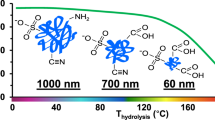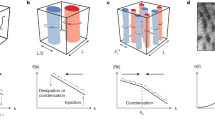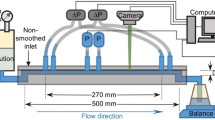Abstract
THE study of the Toms phenomenon, the large reduction in turbulent fluid friction resulting from the presence of trace amounts of certain polymers in the liquid, has advanced to a stage at which work on the effects of molecular structure is being reported1. Several authors1,2 have concluded that, for maximum drag reduction, a very flexible coil is required. Indeed, for coiling polymers, we have confirmed these results for a series of poly (n-alkyl methacrylates) (unpublished work of J. H. H.). A more basic question, however, is whether the coil itself is an optimum conformation for the additive.
This is a preview of subscription content, access via your institution
Access options
Subscribe to this journal
Receive 51 print issues and online access
$199.00 per year
only $3.90 per issue
Buy this article
- Purchase on Springer Link
- Instant access to full article PDF
Prices may be subject to local taxes which are calculated during checkout
Similar content being viewed by others
References
Liaw, G. C., PhD thesis, University of Missouri at Rolla (1968).
Merrill, E. W., Smith, K. A., Shin, H., and Mickley, H. S., Trans. Soc. Rheol., 10, 335 (1966).
Hand, J. H., and Williams, M. C., J. Appl. Polymer Sci., 13, 2499 (1969).
Mathieson, A. R., and Matty, S., J. Polymer Sci., 23, 747 (1957).
Author information
Authors and Affiliations
Rights and permissions
About this article
Cite this article
HAND, J., WILLIAMS, M. DNA and Structural Effects in Turbulent Drag Reduction. Nature 227, 369–370 (1970). https://doi.org/10.1038/227369a0
Received:
Issue Date:
DOI: https://doi.org/10.1038/227369a0
This article is cited by
-
Significance of the Molecular Architecture in Turbulent Drag Reduction
Nature Physical Science (1972)
-
Drag Reduction and Molecular Structure
Nature Physical Science (1972)
Comments
By submitting a comment you agree to abide by our Terms and Community Guidelines. If you find something abusive or that does not comply with our terms or guidelines please flag it as inappropriate.



